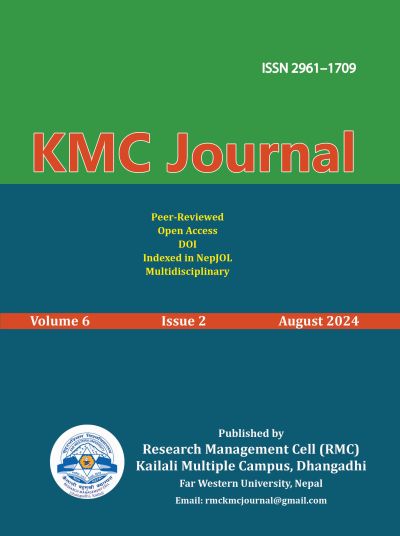Child Marriage Practices in Nepal: A Case of Kailali District
DOI:
https://doi.org/10.3126/kmcj.v6i2.68903Keywords:
Women’s education, women’s health, child marriageAbstract
Child marriage in Nepal, a practice deeply rooted in cultural traditions, poses significant barriers to education and has profound impacts on the health and well-being of young girls, highlighting the urgent need for educational interventions to break this cycle and promote healthier life. The objective of this study was to assess the role of education on child marriage and the impact of child marriage on health in the context of Nepal. Specifically, the research concentrates on gathering information on the health status, education status, perceptions and the role of influencing factors on early marriage. The study used a sequential mixed-method design, including questionnaires completed by 125 women married before 18, two focus group discussions with 20 students (10 boys and 10 girls), and quantitative surveys for statistical analysis. This research shows that the role of education plays an important role before and after child marriage and it shows that society functions as the primary agent of socialization for child marriage. Apart from that, poverty, education, gender discrimination, cultural practice and lack of awareness are some of the factors (preventive measures) of child marriage. This study, therefore, seeks to depict the main components of child marriage pointing out the effect on girls’ health that increased risk for death during childbirth including obstetric fistulas, school dropout and domestic violence. This study concludes with possible strategies and programmes that must be implemented by all the representatives for education, raising awareness about women’s health through government and non-government organizations.
Downloads
Downloads
Published
How to Cite
Issue
Section
License

This work is licensed under a Creative Commons Attribution-NonCommercial 4.0 International License.
This license allows reusers to distribute, remix, adapt, and build upon the material in any medium or format for noncommercial purposes only, and only so long as attribution is given to the creator.




